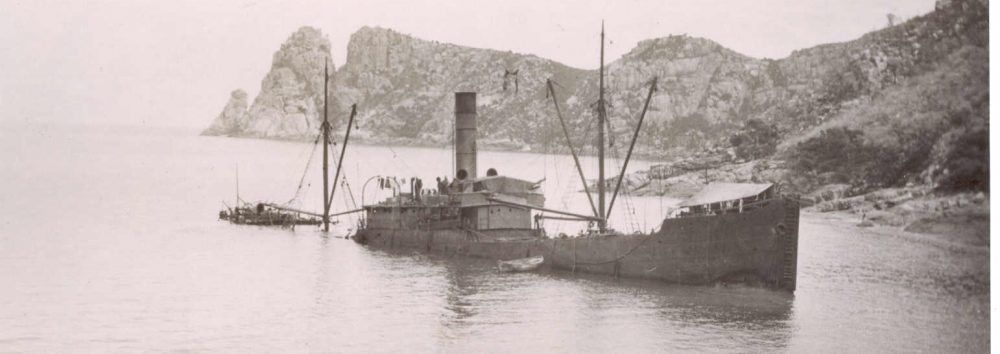Brittle stars (known as ophiuroids) are still abundant on the seafloor, from coastal reefs and mudflats to the deepest trenches. They are found from the equator to polar regions, and feed on plankton or the occasional tiny animal unfortunate enough to brush against their extended arms.
Source Tim O’Hara, Museums Victoria

A brittle star feeding off Lizard Island, Queensland. J Finn
Peer back to the Cambrian period (542-488 million years ago) and the ocean was full of echinoderms – the sea stars, sea urchins, brittle stars, sea cucumbers and feather stars. As more predators began to appear, the brittle stars started to evolve more flexible bodies, which enabled them to either burrow into the sediment, or to move more rapidly to escape.
Some species of brittle stars evolved in response to predators such as early forms of rays and crabs, other forms simply moved to where the predators weren’t – namely the seas around Australia, which was then pushed up against Antarctica. In these cold, predator-free waters, the archaic forms were able to grow much larger, and lived at the same time as the modern forms of brittle star, which still exist today.
Modern brittle stars date back to just before the great Permian-Triassic mass extinction event PTME (252 million years ago) which obliterated 95% of all marine life. Was it an asteroid impact, massive volcanic eruptions, global warming, acid rain, ocean stagnation, and ocean acidification or some other cause? The PTME or the “Great Dying” marks the time when life came closest to complete annihilation. Most of the ancient brittle stars disappeared and only a few lineages survived. This scenario was common across many groups of organisms.

A new species of brittle star found off the southwest Australian coast. C Harding/Museum Victoria
Brittle stars fragments are very common in fossil sediments. Relatively rare are complete fossils
 Fossil from the Cundlego Formation in Western Australia near Carnarvon. Credit: Kenneth McNamara
Fossil from the Cundlego Formation in Western Australia near Carnarvon. Credit: Kenneth McNamara
Brittle-stars possess tube feet under the arms, catching small prey, burrowing into mud, or helping the animal move over rock. The tube feet are like long water-filled balloons that can be controlled by sucking in or pushing water in and out of the tube. Brittle stars reach sexual maturity at about 2 years of age and become full grown by 3 or 4 years of age. Their life span is generally about 5 years.
Spawning is the most common way brittle stars reproduce. Male and female brittle stars release sperm and eggs into the water. Fertilized eggs develop into four-armed swimming larvae that feed on plankton for a few weeks, the juveniles change into 5 armed animals then sink to the ocean floor. Some species fertilize and brood their eggs in a special chamber inside the female’s body. Smaller species of brittle stars tend to brood more than the larger species. Brittle stars can break up and grow new bodies and arms to form two animals.
They can scan the sea floor, thanks to light-sensitive cells scattered across its skin, rather than by using eye-like structures.
In shallow waters they may have colourful patterns as a camouflage. Some can even change colour between night and day by expanding or contracting pigment cells in the skin. In deeper water they become orange or red, colours which appear black in low light marine waters. Others are a grey colour to match the seafloor mud. To further avoid being eaten, brittle-stars can emit a green or blue flashing light. Some species will drop off a flashing arm when attacked: the fish grabs the arm and the rest of the animal escapes. Other species appear to use light to advertise their disgusting taste. Fish and crabs rapidly learn not to eat a flashing object!
Today there are about 2,100 different species, mostly found in the deep ocean. Meadows of brittle stars and other invertebrates such as sea urchins and starfish can still be seen today in the seas around Antarctica. As was the case during the Palaeozoic, the threat from predators is fairly low, although the warming of the Antarctic seas due to climate change has been linked to the recent arrival of armies of king crabs, which represent a real threat to these star-filled meadows.
Its not all bad news, some species show a degree of resilience to ocean acidification. The brittlestars prevent more acidic ocean water from dissolving their spindly arms by creating more shell material from minerals in the surrounding water. To do so, they speed up their metabolism using up their own muscle to create the needed energy. The warning is that they might still be knocked off by competition for reduced resources.

Ria Tan/Flickr, CC BY-NC-ND
